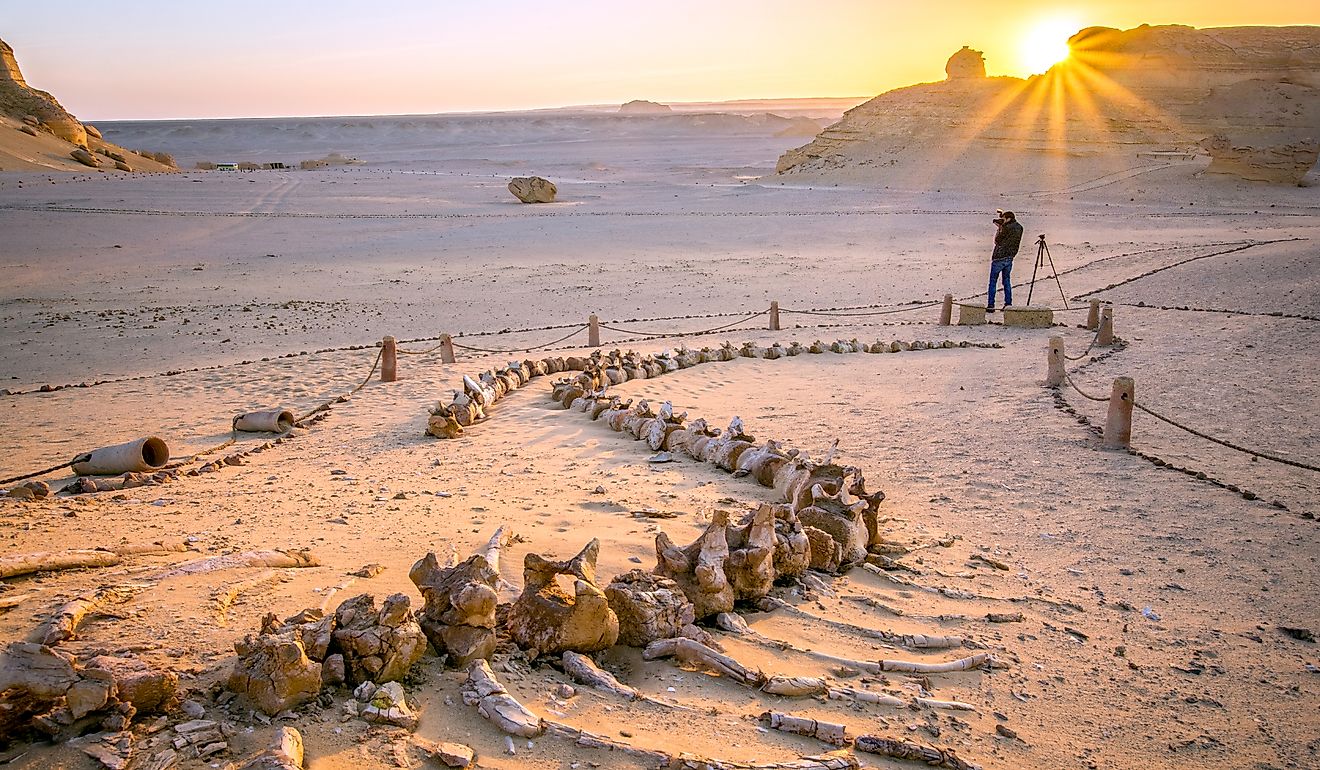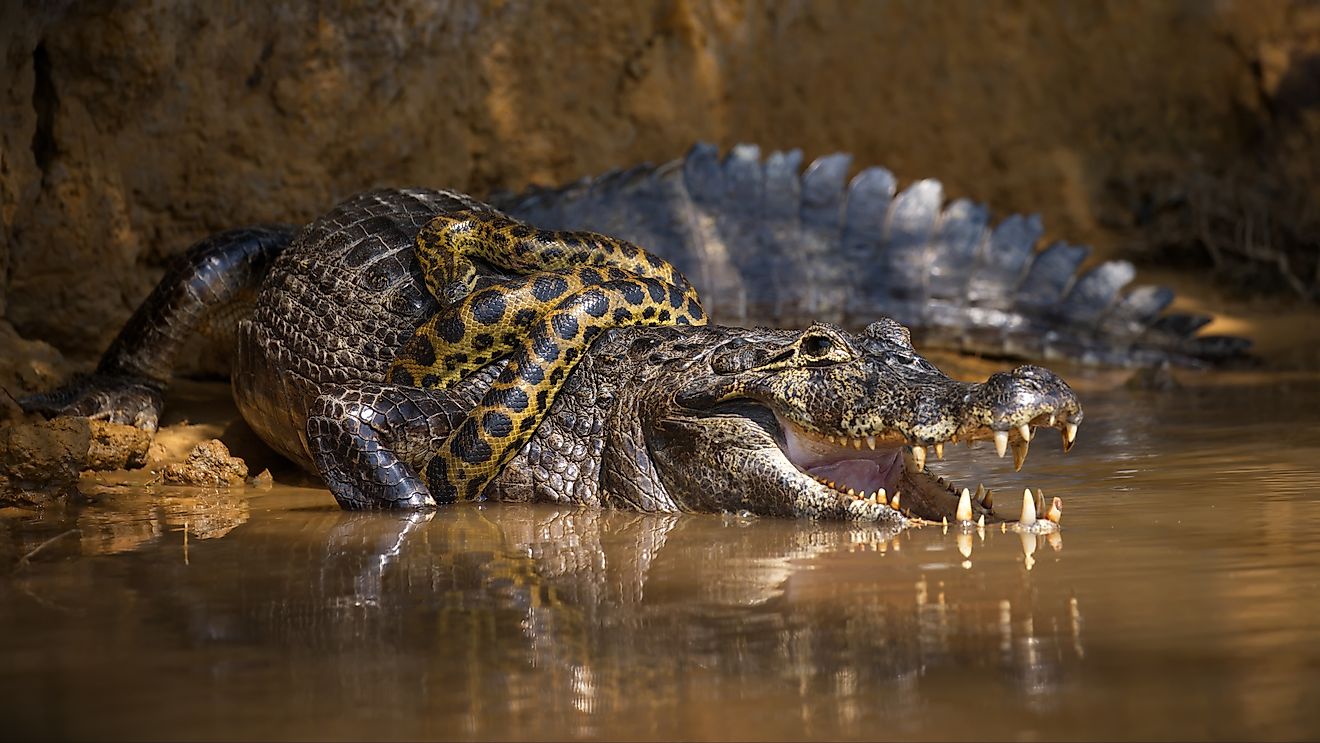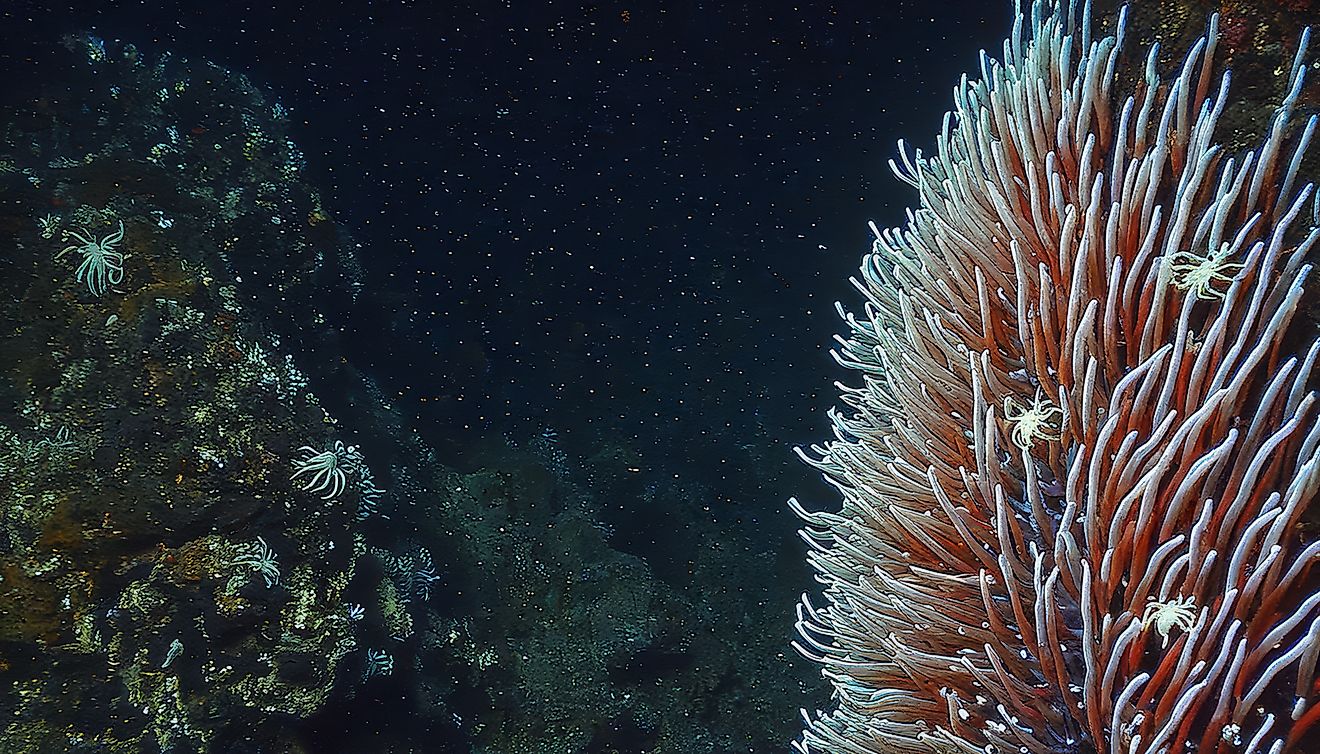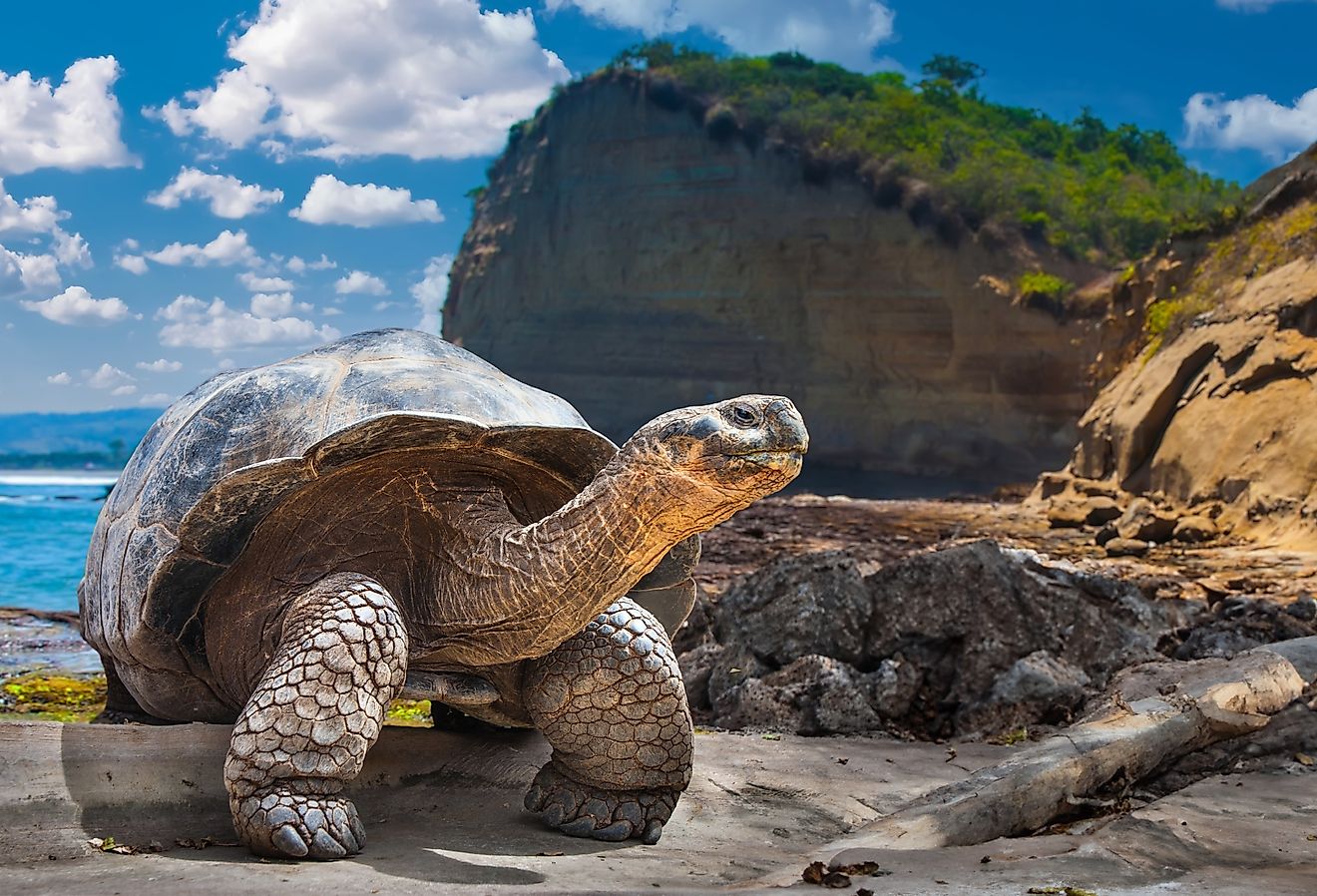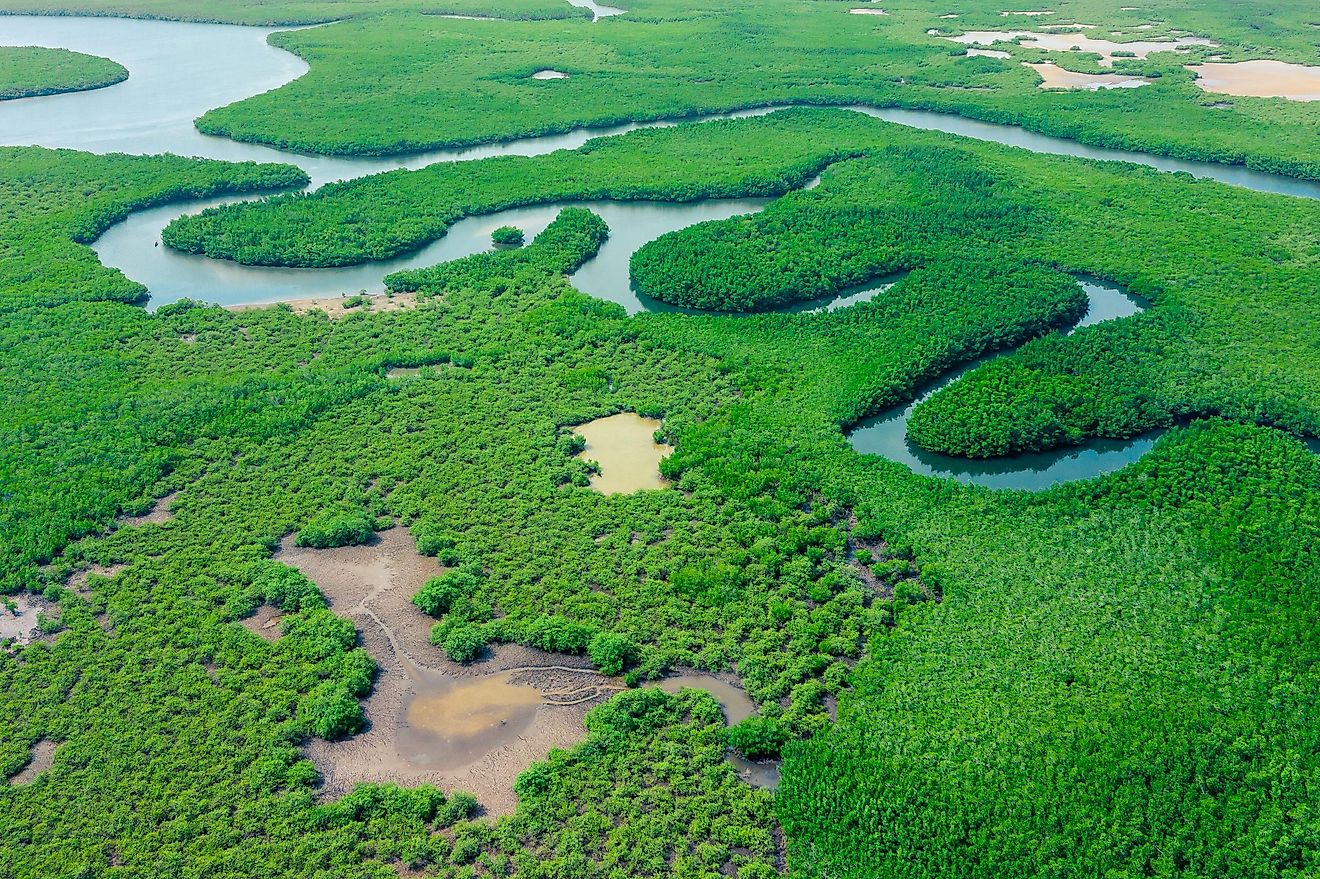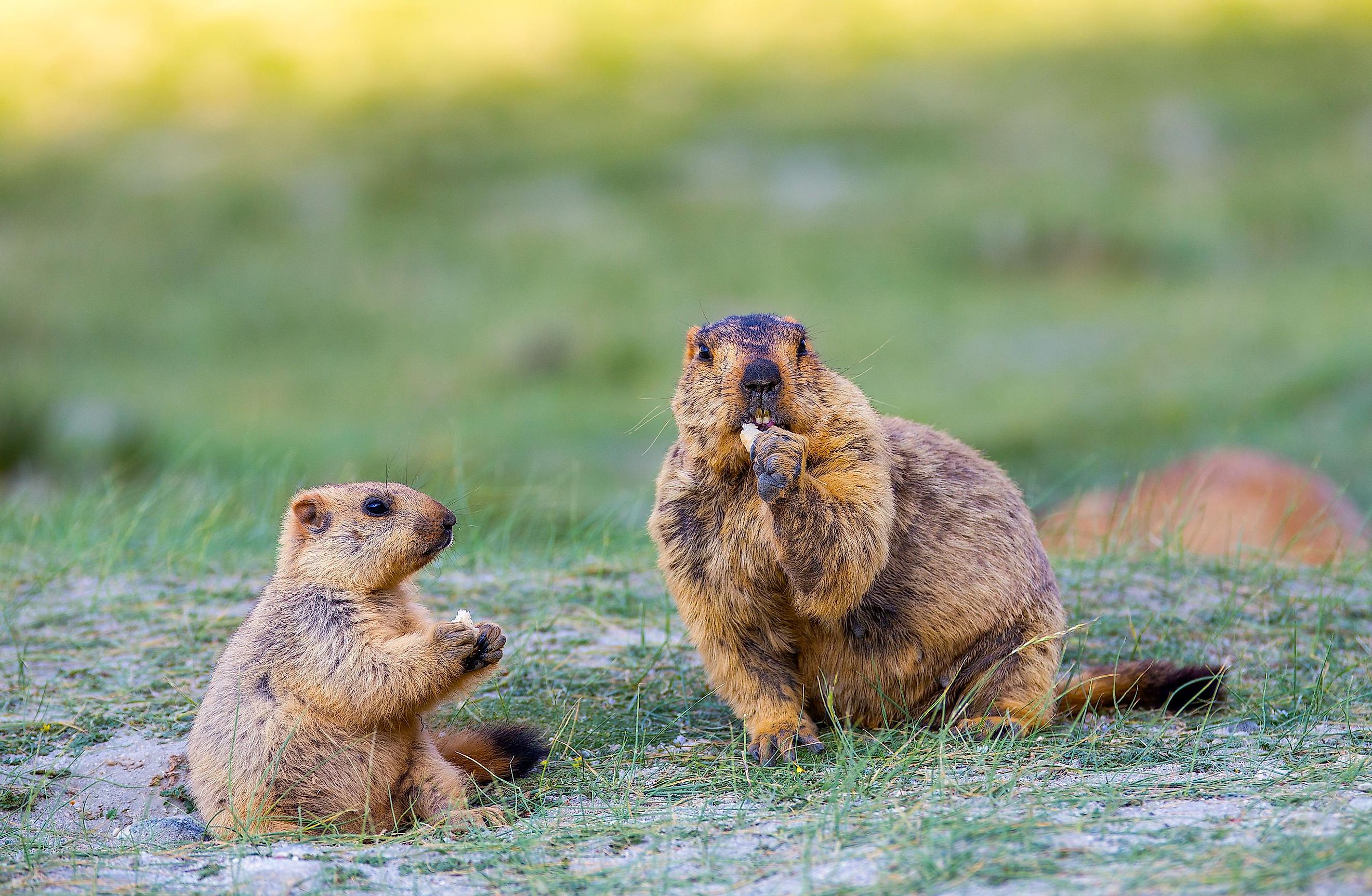
12 Amazing Animals You Will Only Find in the US
The world's third-largest country, the United States, covers an area of 9,833,520 sq. km in the North American continent. Forming a part of the Nearctic, Neotropic, and Oceanic biogeographical realms, the country's varied ecosystems harbor several unique species of plants and animals. The United States houses approximately 100,000 insect species, 1154 fish species, 295 amphibian species, 311 reptilian species, 800 avian species, and 432 mammalian species. It is also one of the 17 megadiverse countries and home to numerous endemic species (and subspecies) found nowhere else on the planet with some of them described below:
- American Alligator
- Houston Toad
- Red-Cockaded Woodpecker
- Olympic Marmot
- Gopher Tortoise
- American Green Tree Frog
- Cape Sable Seaside Sparrow
- Utah Prarie Dog
- Eastern Indigo Snake
- Hawaiian Hawk
- Mohave Ground Squirrel
- Florida Panther
American Alligator
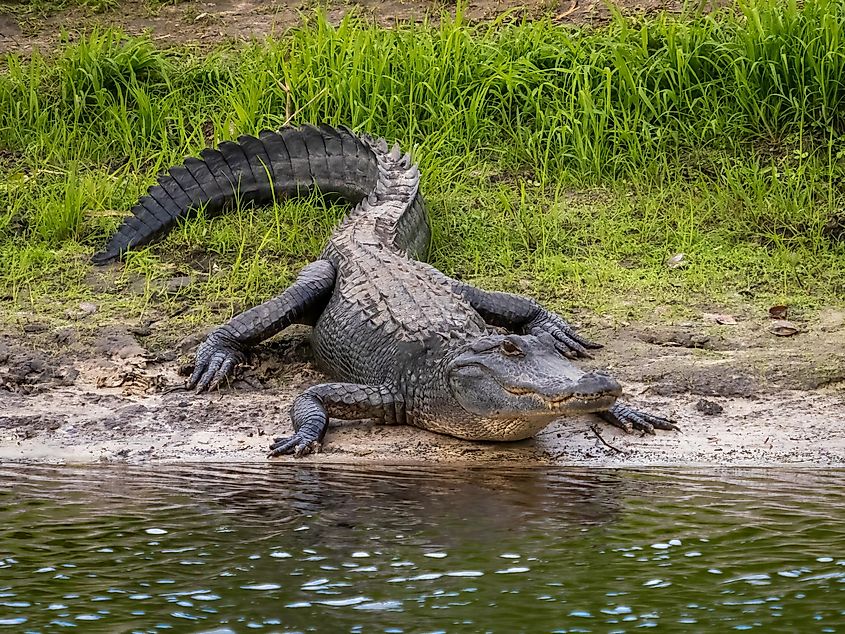
The American Alligator (Alligator mississippiensis) is a large crocodilian species found in the Southeastern United States. Adult male American alligators reach about 3.4 to 4.6 m in length and weigh about 453 kg, making them one the most prominent members of the Alligatoridae family. The species can be easily distinguished from its close relative, the American crocodile, by its rounded snout having overlapping jaws, muscular tail, strong limbs, and an armored body with dark coloration. The alligator inhabits the tropical and subtropical freshwater wetlands from southern Texas to North Carolina. The diet of American Alligators comprises fish, small mammals, turtles, snakes, amphibians, birds, etc. Through the creation of alligator holes, American alligators play a significant role as 'ecosystem engineers' in wetland ecosystems.
Houston Toad
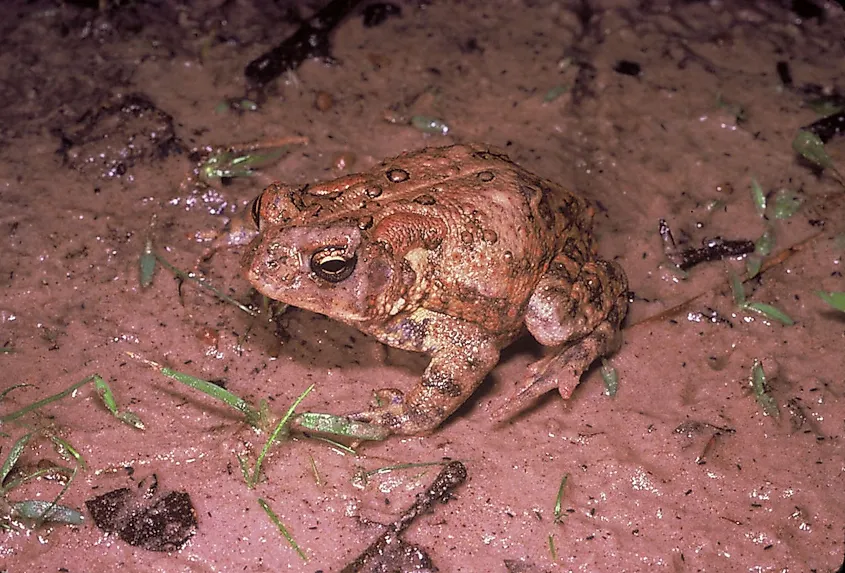
The Houston toad (Anaxyrus houstonensis) is a critically endangered amphibian species endemic to Texas. The general coloration of the toad varies from light brown to purplish gray, often with green patches. The mature female toads are larger and bulkier than the males and have a length of 52 to 88 mm from snout to vent. Throughout the year, the Houston toad remains active during the day, while during the breeding season, it remains active mainly during the night. The toad feeds on insects and small invertebrates and is found in areas with loose, sandy soils supporting loblolly pine forest or mixed post-oak-woodland savannah. The Houston toad aestivates in burrows to escape the hot, dry summers as well as the severely cold winters.
Red-Cockaded Woodpecker
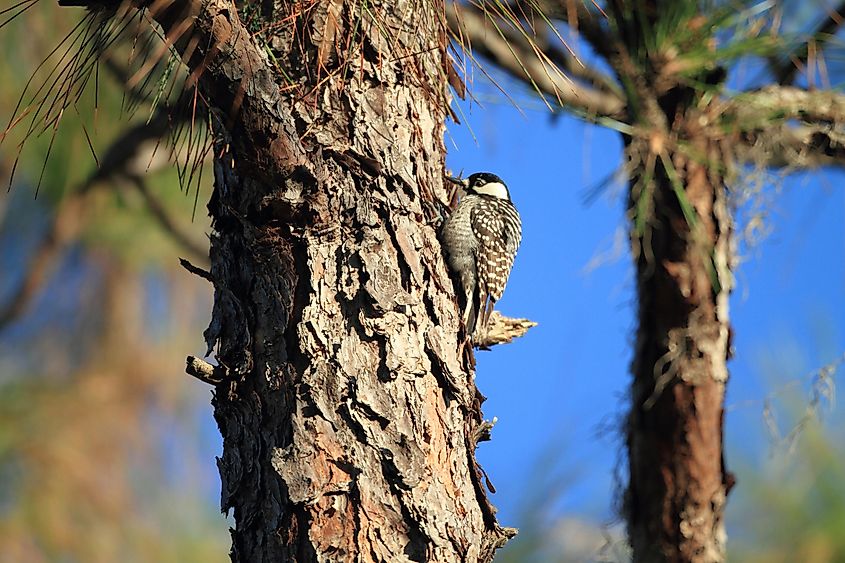
The red-cockaded woodpecker (Leuconotopicus borealis) is a small to mid-sized woodpecker species endemic to the southeastern United States. The species reaches a length of about 18 to 23 cm, has a wing span of 34 to 41 cm, and weighs 40 to 56 g. The most distinctive feature of this woodpecker is its black cap and nape surrounding the sizeable white cheek patches. As insectivores, the red-cockaded woodpecker primarily feeds on wood-boring insects, ants, cockroaches, spiders, beetles, and caterpillars. Occasionally, it also eats fruits, berries, and even corn earworms. The woodpecker prefers longleaf pine trees for making its home and thereby plays a crucial role in the complex web of life of the southern pine forests.
Olympic Marmot
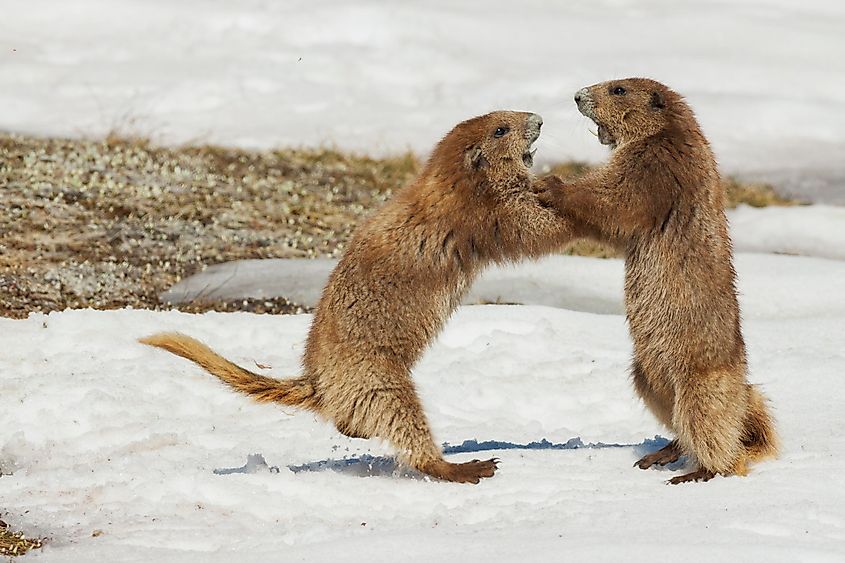
Olympic Marmots (Marmota olympus) are large ground squirrels found only in the mid-elevations of the Olympic Peninsula in the US State of Washington. These marmots can be easily identified by their brownish fur with small whiter areas, a broad head with small eyes and ears, short legs, sharp, rounded claws, and a long, bushy tail. The total length of these marmots is about 67 to 75 cm, with the tail about 18 to 24 cm long. About 90% of the Olympic marmot's total habitat is within the Olympic National Park, where these marmots can often be sighted on the slope of Hurricane Ridge. Feeding mainly on various meadow flora, the Olympic marmot inhabits the subalpine and alpine meadows and the montane scree slopes at elevations ranging from 920 to 1,990 m.
Gopher Tortoise
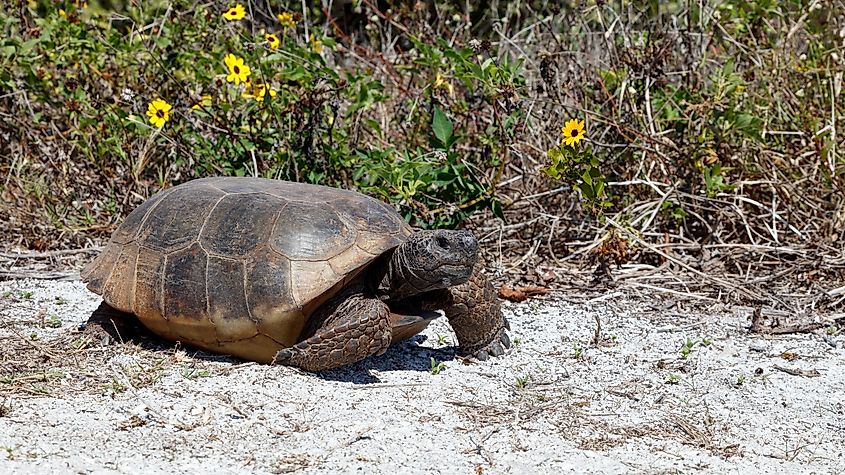
Gopher Tortoise (Gopherus polyphemus) is a large terrestrial tortoise species endemic to the Southeastern United States. This tortoise has a dark brown to gray-black coloration with a yellow-colored bottom shell. Sexual dimorphism is evident as the male gopher tortoises have a concave bottom shell, while the female tortoises have a flat one. The forefeet of these tortoises help them dig deep burrows in longleaf pine savannas, where they hide from predators and are protected from the summer heat and cold winter temperatures. Being opportunistic grazers and herbivore scavengers, the gopher tortoises feed on a wide variety of plant species, including broad-leaved grasses, terrestrial legumes, pine needles, and other plant parts like shoots, stem, and leaves.
American Green Tree Frog
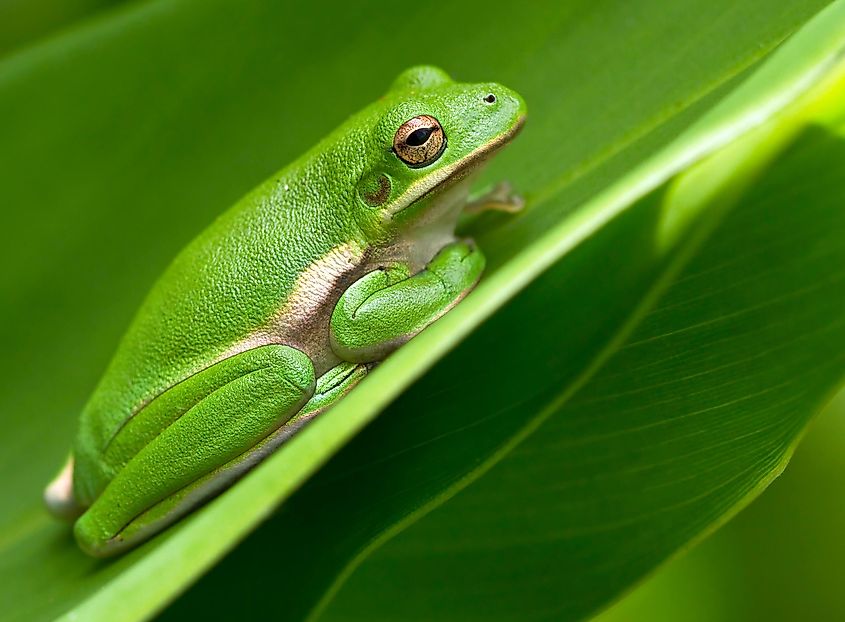
The American green tree frog is a moderate-sized nocturnal insectivore found in the central and southeastern portions of the United States. Its geographic range extends from the Eastern Shore of Maryland to southeastern Florida, with small populations in central Texas, Delaware, and New Jersey. This frog can be identified by their bright green to reddish-brown coloration, smooth skin, and long legs. Being insectivores, the American green tree frog primarily feeds on flies, grasshoppers, spiders, crickets, mosquitoes, cockroaches, beetles, and ants. Largely arboreal, the green tree frog prefers open canopy forests and permanent water bodies with lots of vegetation. However, these frogs have experienced severe habitat loss due to rapid urbanization and wildfires destroying forest canopy cover. The American green tree frog also serves as a bioindicator for aquatic contamination.
Cape Sable Seaside Sparrow
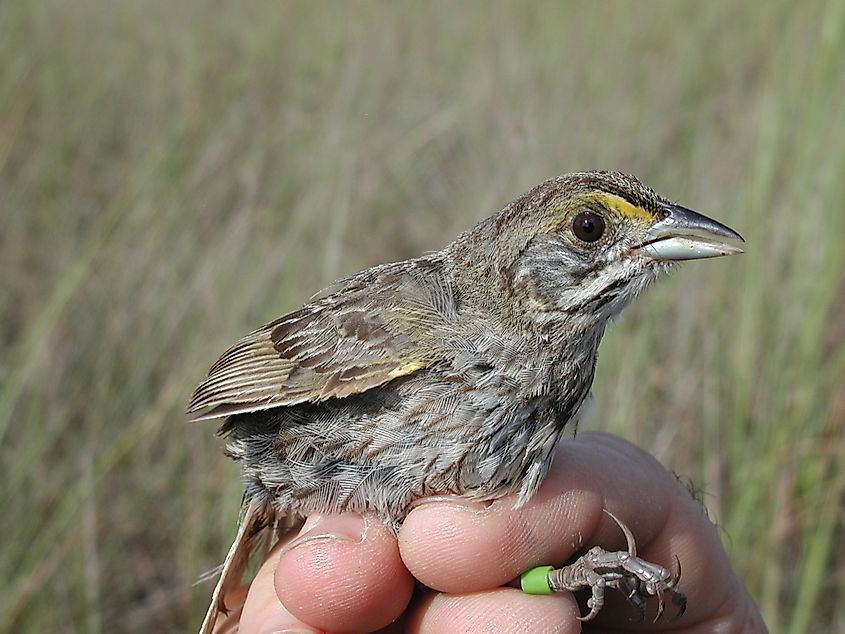
This seaside sparrow subspecies (Ammospiza maritima mirabilis) is endemic to the southern portion of Florida, where they mainly inhabit the freshwater and brackish water habitats of the Taylor Slough and Big Cypress National Preserve in the Everglades National Park. The sparrow grows up to 13 to 14 cm in length, with dark olive-gray colored backs and olive-brown tail and wings. The bird builds its cup-shaped nests in mixed marl prairie communities, mainly consisting of gulf hairawn muhly grasses. Being omnivores, the sparrow feeds on various plant and animal items, including multiple seeds and insects. Under the Endangered Species Act, the Cape Sable Seaside Sparrow has been designated an Endangered species.
Utah Prairie Dog
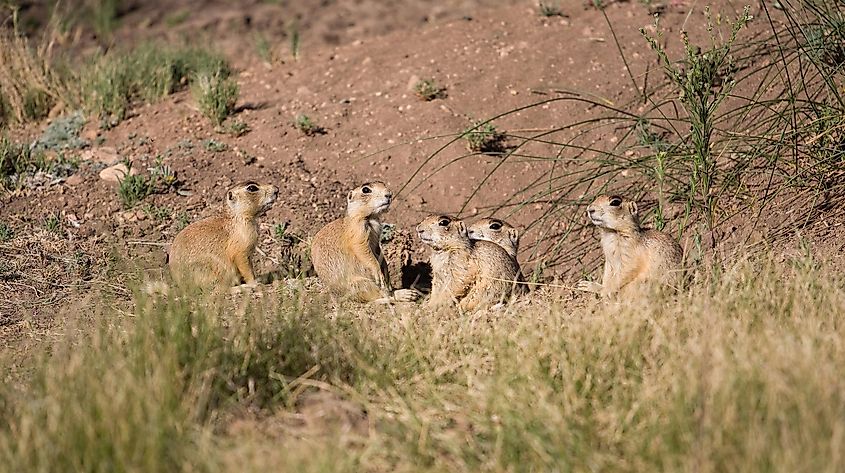
This smallest prairie dog species (Cynomys parvidens) is endemic to the south-central portion of Utah. This ground-dwelling rodent has tawny to reddish-brown colored fur, a short white-tipped tail, dark eyebrows, and a whitish tone around the chins and mouth. The Male prairie dogs are about 27% bigger than the females, with the adults reaching a length of 30.5 to 36.0 cm and weighing approximately 0.77 to 1.41 kg. The Utah prairie dogs prefer marshy places with a lot of herbaceous plants. To protect themselves from predators, they also construct burrows in the soil with ample drainability and depth. As herbivores, the prairie dog primarily feeds on grasses and forbs of high quality. Badgers, coyotes, long-tailed weasels, snakes, etc., are some of the main predators of Utah prairie dogs.
Eastern Indigo Snake
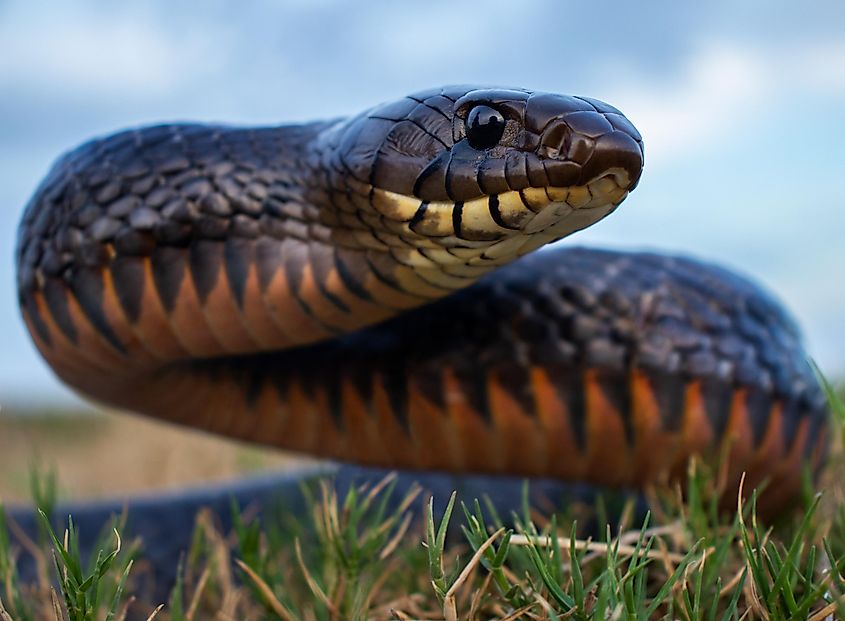
This large non-venomous snake (Drymarchon couperi) is commonly found in the southeastern region of the United States. The snake can be identified by its smooth, glossy, blue-black iridescent dorsal scales. Having a total length of about 2.8 m, it is also considered North America's longest native snake species. The snake prefers tropical hardwood hammocks, flatwoods, sandhill plant communities, cane fields, stream bottoms, and riparian thickets as their habitat. Being carnivorous, it mainly feeds on small animals such as rodents, turtles, frogs, lizards, fish, and various small birds and mammals. Under the US Endangered Species Act, the snake is designated a "federally threatened species" in Georgia and Florida, as it faces threats due to habitat loss.
Hawaiian Hawk
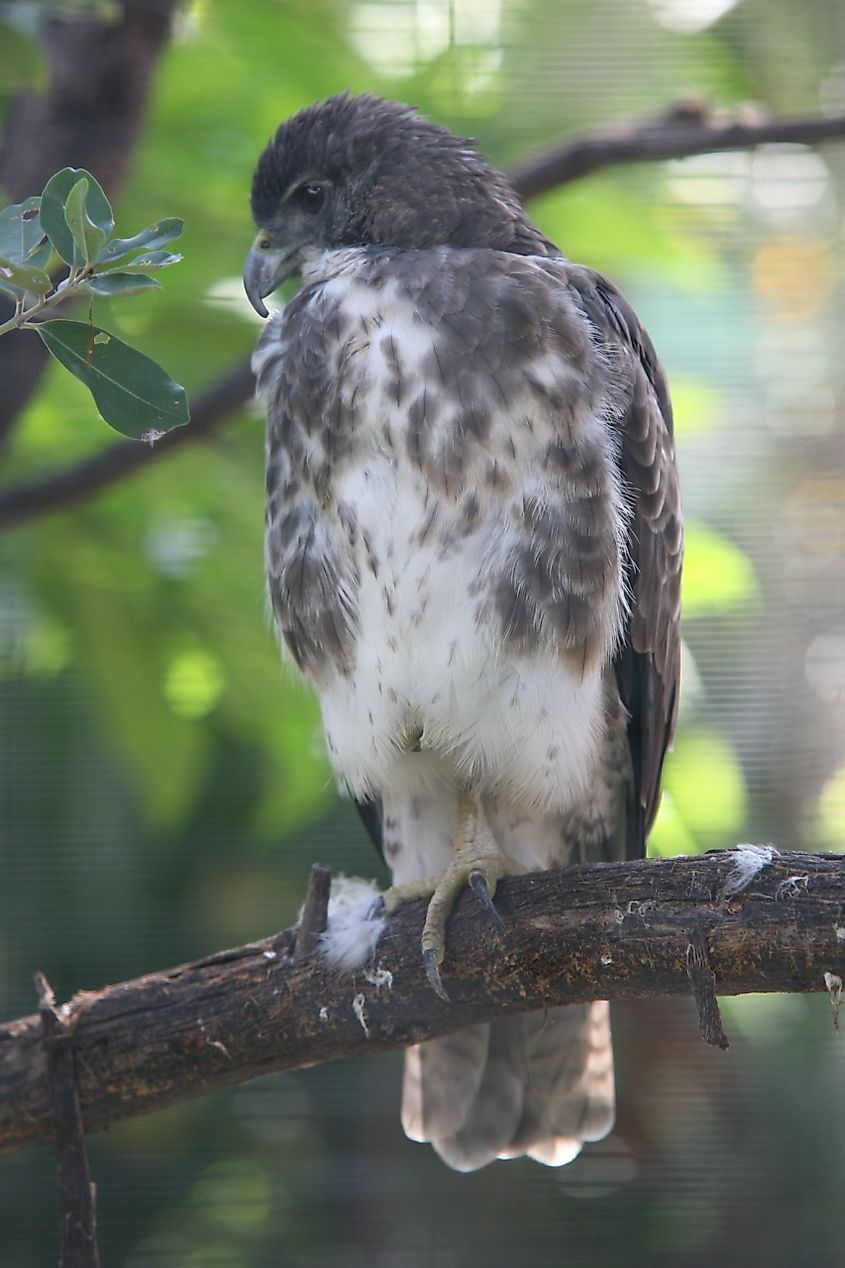
Also referred to as 'io, the Hawaiian Hawk (Buteo solitarius) is a raptor species endemic to the Big Island of Hawaii. The female birds are bigger than the males and measure about 40 to 46 cm in length, and weigh 21.3 oz (605 g). The hawk has two color phases: a dark phase where the head, breast, and underwings are dark brown colored, and a light color phase where the breast and underwings are light-colored, and the head is dark colored. They are opportunistic predators and feed on insects, lizards, game birds, and rodents. Hawaiian Hawks were once regarded as a royal symbol in Hawaiian legends and often called 'iolani in reference to the 'Iolani Palace and the Hawaiian monarch Kamehameha IV.
Mohave Ground Squirrel
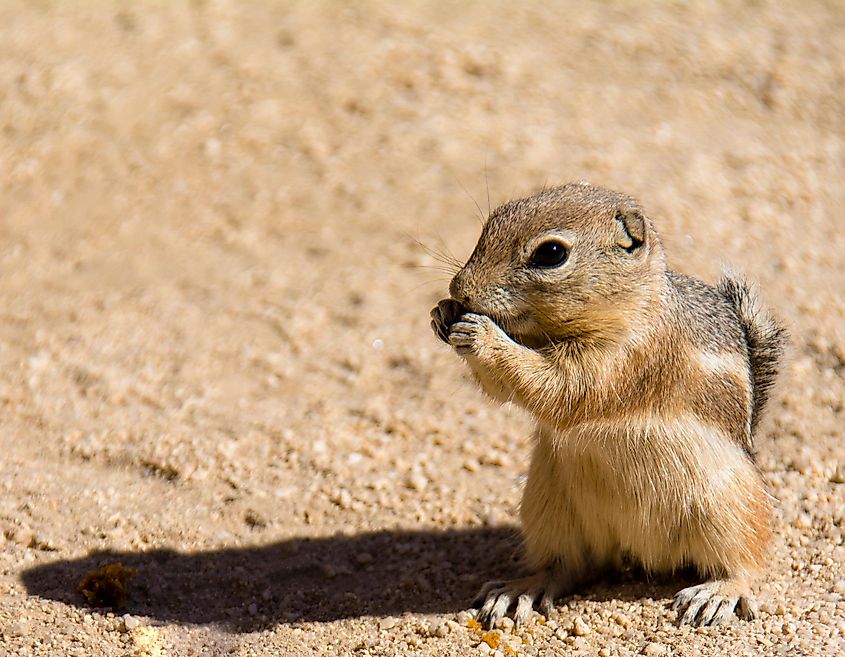
This small ground squirrel species (Xerospermophilus mohavensis) is endemic to the western part of California's Mojave Desert. It has a brown-colored body and measures approximately 9 inches from nose to tail. The rodent prefers Joshua tree woodlands, saltbush scrub, creosote scrub, and Mojave mixed woody scrub as their habitat. From February to July, the Mohave ground squirrel feeds on seeds and leaves of native shrubs and annual plants. Close to July's end, the squirrel begins a period of dormancy in their underground nests. They again emerge from their burrows in early February, and the mating season begins in early March. Badgers, snakes, falcons, and coyotes are some of its natural predators. The Mohave Ground Squirrel is listed as Near Threatened in the IUCN Red List.
Florida Panther
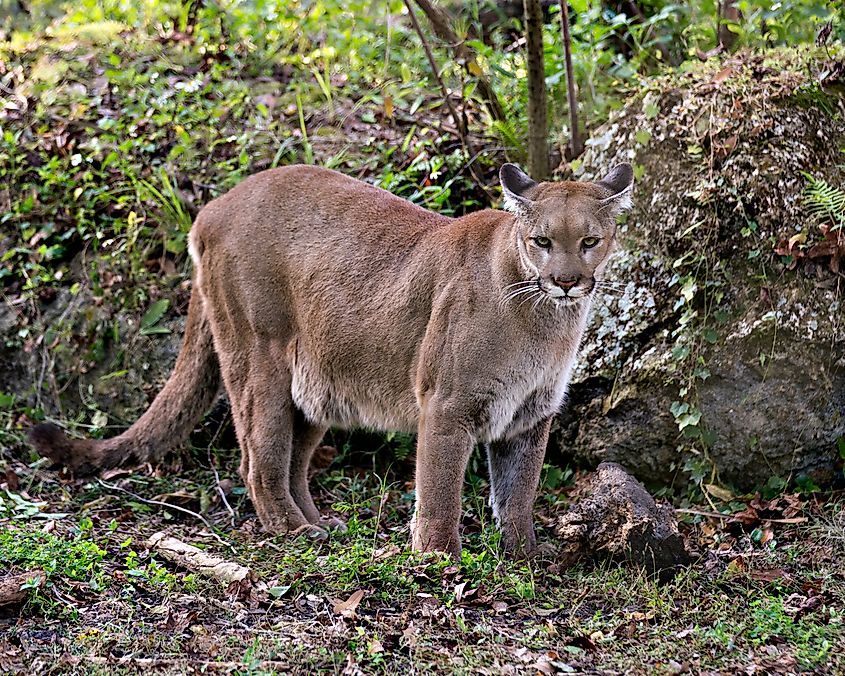
This North American cougar subspecies (P. c. couguar) represents the sole breeding cougar population found in the eastern portion of the United States. Florida panthers have a light-brown colored coat, a creamy-white colored underbelly, and black tips on tails and ears. These animals do not roar; instead, they make distinct sounds, like purrs and growls. Found only in the southern part of Florida, the Florida panther inhabits a wide variety of habitats, including tropical hardwood hammocks, freshwater swamp forests, and pinelands. This big carnivore species feeds on raccoons, hares, armadillos, mice, white-tailed deer, feral pigs, and waterfowl. They are also opportunistic hunters and prey on livestock and domestic animals. In recent times, the Florida panther population has been facing many threats due to the fragmentation and degradation of habitats.
The above article discusses some fascinating animals endemic to the United States. Most of these animal species face a significant risk of getting wiped off the face of our beautiful planet. Moreover, if anthropogenic pressures continue unabated, it is believed that numerous species are at high risk of becoming extinct in the next few decades. Therefore, our immediate responsibility is to take care of these species and ensure that they continue to be seen and enjoyed by future generations.
